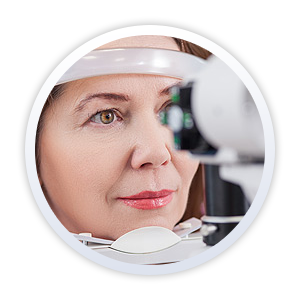The retina is the thin, complex membranous lining in the rear of the eye that is responsible for converting images from the eye’s optical system into electrical impulses. These impulses then travel through the optic nerve to the brain where they are processed into the images that we see! The retina covers approximately two-thirds of the back of the globe. It contains millions of photoreceptor cells called rods and cones that are responsible for processing light energy into these images. These cells also allow for sharp visual acuity and color discrimination.

A term often heard when speaking of the retina is the macula, sometimes referred to as the macula lutea. The macula is located near the center of the retina and is directly in line with the pupil. The fovea is the central area of the macula. It contains the highest concentration of cones and is responsible for high-resolution and detailed color vision that we enjoy in good light. Damage to the macula from diseases such as macular degeneration usually results in the loss of one’s sharp, central vision. While there are currently no treatments to restore lost vision from macular degeneration, there are treatment options to slow the progress of such diseases.
Damage to the retina through a disease process or trauma can cause serious vision problems including blindness. Indications for a retinal exam include anyone that is experiencing distorted vision such as wavy lines that should appear straight, sudden or prolonged flashes of light, dark specks in the vision that appear to be floating (floaters), or any general change in the sharpness of one’s vision. Any loss of color perception could also indicate the need for a retinal evaluation. If you are experiencing any of the above symptoms, you should schedule an exam with your retinal specialist right away. Delays in treatment of retinal problems can result in irreparable damage to the eye and permanent vision loss.





